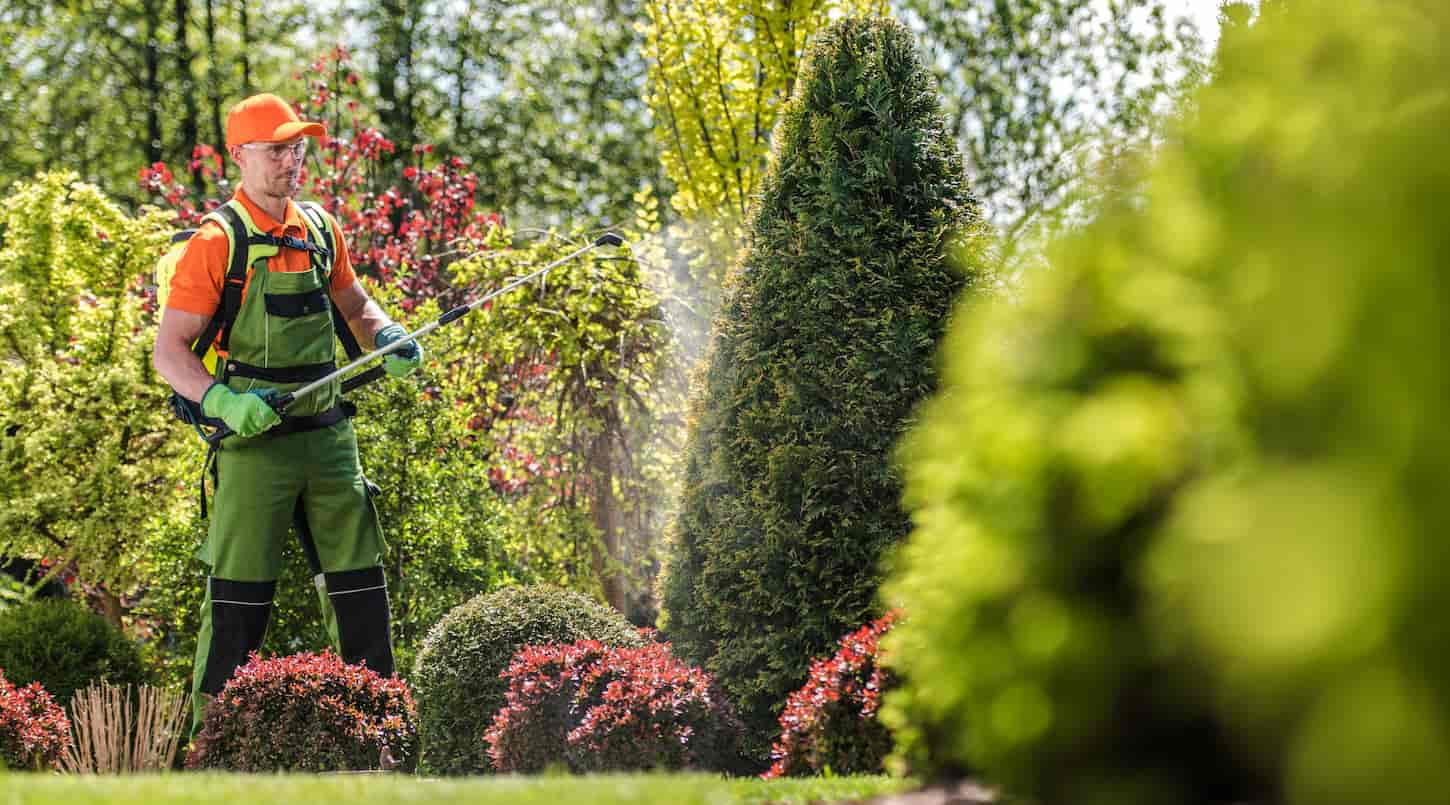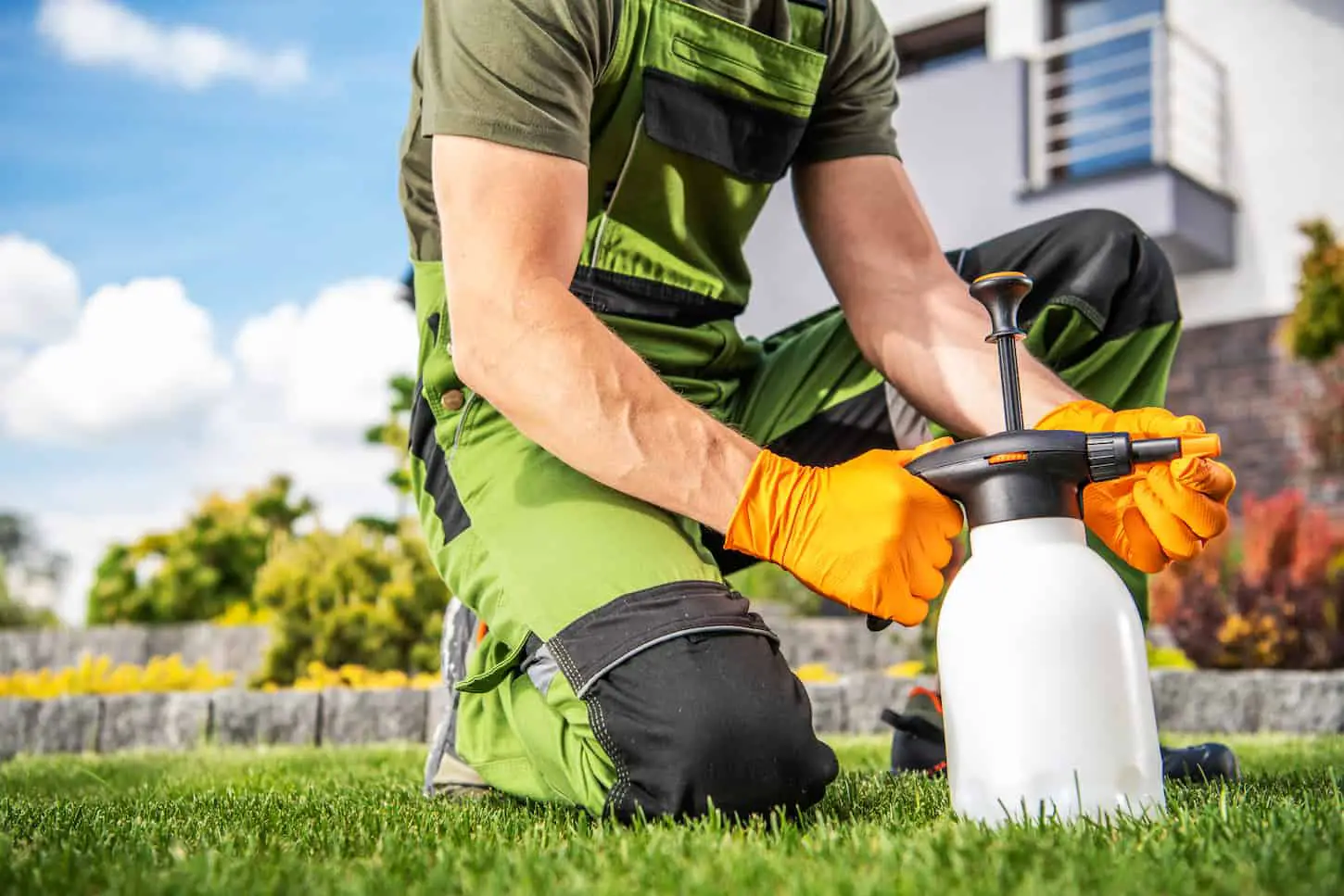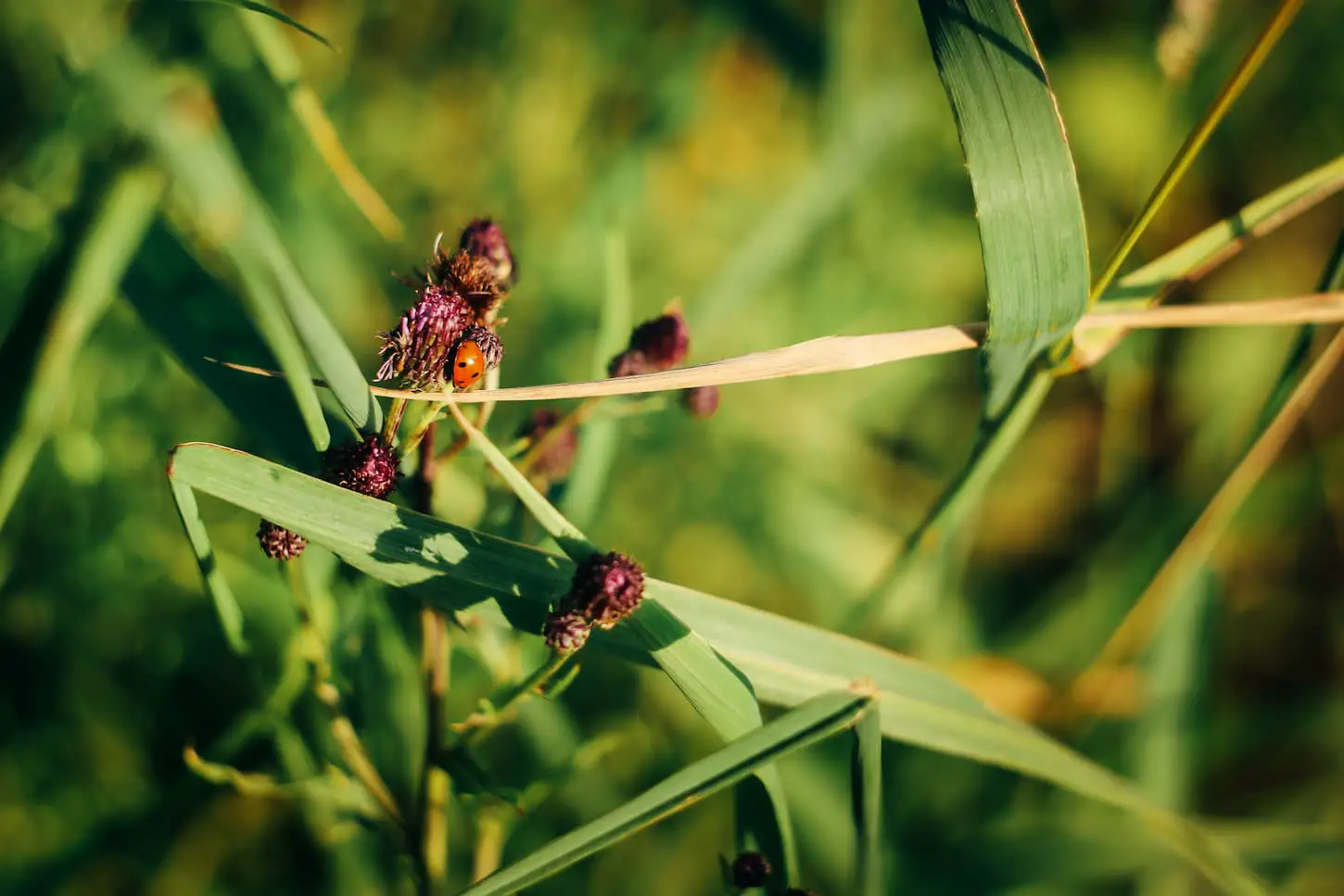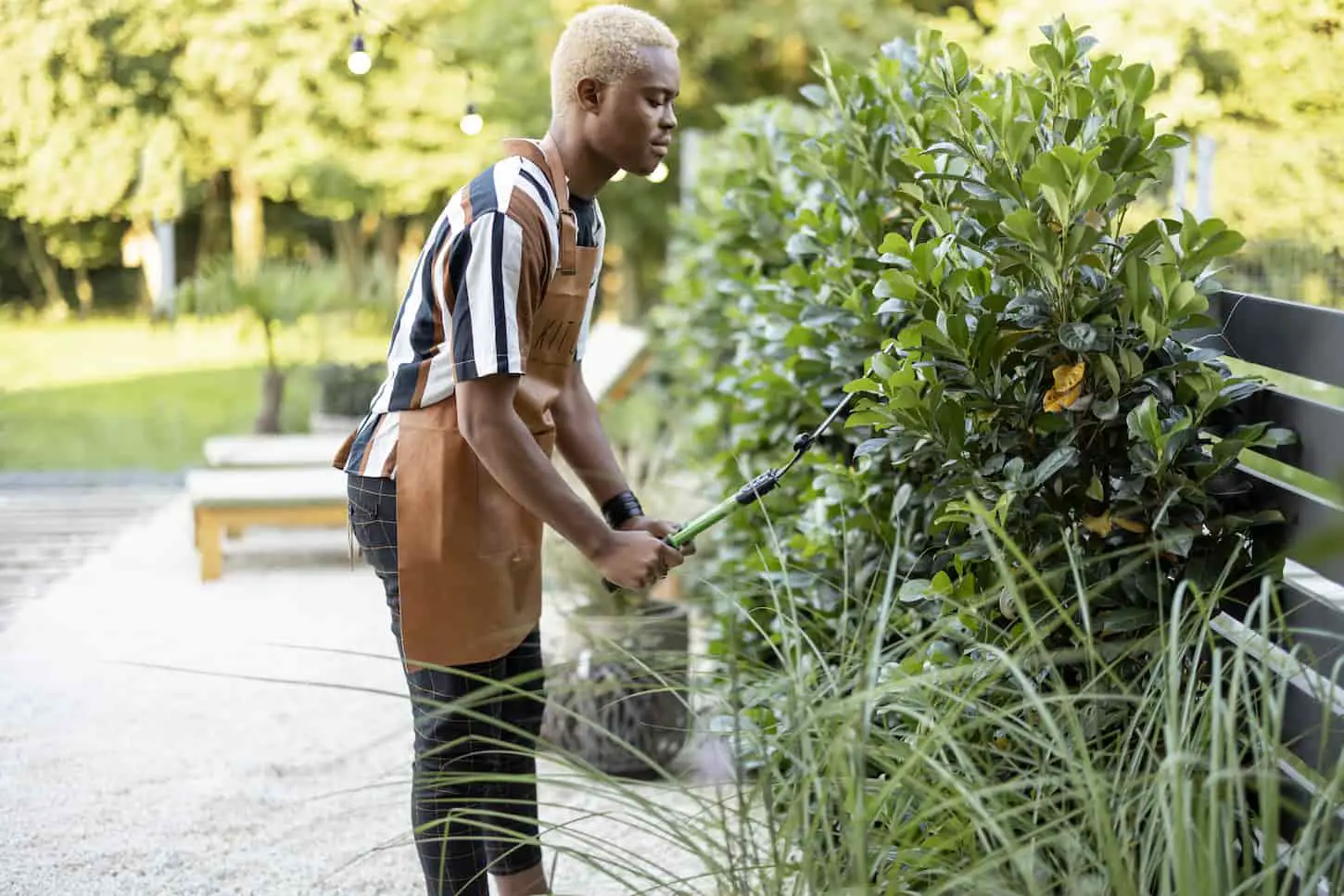We might see the yard as our own, but many pest species out there would love to “share” it with us. Pests are attracted to the food and shelter provided by the plant life around the home, and we must keep them at bay if we don’t want problems.
To control pests, here are 7 pest control strategies to know, use, and/or combine as needed:
- Control the environment
- Use mechanical obstacles
- Make DIY pest repellent
- Spray them with water
- Plant repelling plants
- Use insect traps
- Rely on biological control
There’s much more to pest control than it might initially seem. In today’s article, we’ll see just how effective natural pest control methods are, how to keep the bugs away, and what the difference is between natural methods and pesticide use.

Control the Environment
One of the best natural ways to control pests includes controlling the environment. It doesn’t matter if the pests appear in the garden or on the lawn – we can often keep them at bay with natural methods.
Applying pesticides shouldn’t be our first instinct when dealing with pests in our yard. First, it may not even be legal to apply pesticides in the region. Secondly, there are more natural ways to get rid of them.
For example, aerating the lawn and fertilizing it properly makes it less habitable. Fertilizing the lawn will make it thick and dense, which increases pest tolerance.
The most common cause of pest damage is overwatering. This is why experts recommend that we water the lawn infrequently but deeply. When we sprinkle our lawn regularly, it is more susceptible to diseases, attracting insects.
You’ll recognize lawn diseases by the brown and yellow spots!
So, the first step in preventing pests is caring for the lawn by trimming it, watering it, fertilizing it, and aerating properly. This makes the yard inhospitable to them and minimizes the chances of invasion.
Use Mechanical Obstacles
Mechanical obstacles are the most effective control method when it comes to larger pests, such as rabbits, gophers, deer, and squirrels.
Deer, for example, can jump very high – but despite all their agility, they still can’t jump over an 8-foot fence. Fencing off the yard will prevent deer invasions.
Rabbits and gophers also require fencing, preferably underground, as they enjoy digging.
Aside from mechanical obstacles, we can also use scare tactics (a guard dog) and animal repellents to keep these larger pests out of the yard.
Make Your Own Pest Repellent
Repellents work on the basis of overwhelming the animal’s senses by breathing them in. Although some smells are found to be unattractive to insects, the idea is that an insect will breathe in the scent and get completely disoriented. When animals get disoriented, they leave the area.
Fun fact: we can make our own repellent with ease!
A very effective active agent in this regard is vinegar. However, we must dilute half a bottle of vinegar in at least two gallons of water. Vinegar contains acetic acid, a known plant killer, and we don’t want to hurt our plants.
If applied properly, vinegar will overwhelm an animal’s senses and drive them crazy.
Want to know more about how vinegar is a known plant killer? Check out our article, Will Vinegar Kill Crabgrass? Here’s the Truth for the answers!

Spray Them Off (with H2O)
Water spraying is a similar method of pest control, though usually only applied to aphids and other insects. Since insects usually feed on the underside of leaves, we can spray them off with a strong stream.
This is why rain is ‘one of the greatest natural management strategies for spider mites, according to NC State.
Water control can be applied to some larger pests too. We can connect our sprinklers to a motion detector and use it as a scare device for deer, rabbits, and squirrels. No animal likes being blasted with water!
Plant Repelling Plants
Plants such as lavender, basil, thyme, lemongrass, catnip, and mint generally deter insects, as insects prefer to avoid these plants. When planted by other plants, these insect deterrents can keep the other plants safer from pests.
While this is not a method that guarantees a completely insect-free garden, some plants are seriously disliked by insects and other pests. Planting these known deterrent plants near the plants, we want to protect will certainly help.
However, one thing must be noted. Repellents aren’t 100% effective! They’re a great helper tool, but they are not a standalone method that we should rely on solely.
Use Insect Traps
Insect traps are very useful if used right, but we must ensure we’re using the right ones. They’re more effective in partially enclosed areas, such as a terrace or a gazebo than in open areas. These traps also kill beneficial and harmful insects, which is not what we want.
For example, blacklight insect zappers will only attract insects to the garden if we install them.
Pheromone traps are effective, but their effectiveness depends on the weather.
Rely on Biological Control
Biological control entails using parasites and natural predators of the pest species in the yard to control them. Spiders, for example, feed mostly on other insects, while predatory mites feed on spider mites (a common pest).
When it comes to parasites, there are many parasitic flies and wasps that feed on insects such as aphids. Some of these wasps are incapable of hurting people, which makes them a great ally in the garden.
Tacchini flies, for example, are parasitic insects that feed on pests.
Using biological control gets tricky when you try to complicate things or bring in a species that isn’t naturally found in the area. It’s best to stick to naturally-found species and let the spiders, snakes, and other pest-controlling friends do their job.
What Attracts Bugs to My Yard?
Some pest species feed on plants and do not need a special invitation to invade a yard. Aphids and whiteflies are good examples – they will converge on plants if there isn’t a natural predator or if they’re not treated with a pesticide.
Stressed plants are known to attract pests, so it often turns out that the plant got sick first, and the pests only swarmed it after the disease developed.
Most of these pests become more aggressive with warm weather (source), although we can usually see them in all seasons except winter.
Another reason pests could be attracted to a yard is that it might provide them with good breeding grounds.
Many species need rotting vegetation or food to lay eggs in as the process of decomposition releases energy that keeps the temperature high enough for the eggs to incubate, grow, and then feed the baby pests when they hatch.
This is, for example, why flies multiply more often in uncut grass!
Because of this, experts remind us that maintaining the environment is the most effective way of keeping pests away from our yards. Prevention is the most useful tool in pest management.

How Do I Get Rid of Bugs In My Yard Naturally?
To get rid of bugs naturally, rely on natural methods – such as using biological control, pest traps, and, most importantly – creating an inhospitable pest habitat. If we follow these rules, we most likely will not need chemical pesticides.
Animals won’t inhabit an environment where they have no food or breeding grounds and are in danger of dying.
When should I use pesticides?
If the time has come to use pesticides, make sure to use pesticides that only target the species of pest invading the plants. Many amateurs make the mistake of using a wide-spectrum pesticide, and they end up killing both invasive and beneficial insects!
While chemical pest treatment methods are effective, they are not necessary. In most cases, we can prevent pests by keeping the garden and yard tidy and encouraging beneficial predators.
Experts recommend that we only use pesticides as a last resort.
Check the local guidelines for pesticide use – different pesticides are legal in different areas. Some pesticides need a special license to purchase and apply, so it’s possible that you, personally, can’t even use them.
If you don’t know where to find your local guidelines, search for your local university’s agricultural extension. They will be your best local experts for pesticide scheduling and recommendations.
How Can I Make My Backyard Bug Free?
If a yard is already swarming with bugs, we must kill all existing bugs before moving on to prevention methods. After killing all pests in the yard, we can move on to prevention methods to ensure they don’t reappear.
The most effective and efficient way of killing pests is by chemical methods. While most chemical pesticides are considered unnatural or inorganic, pesticides are great at what they do.
Some organic pesticide options can be used, though, so don’t rule those out if you’re going for the organic gardening aesthetic.
If you’d rather stick to purely natural methods, know you can do so. Expect it to take longer than if you used pesticides, though.
Can I do backyard pest control on my own?
In most cases, infestations are not so advanced that we need to call for expert help. While an exterminator will certainly kill all the bugs in a yard, chances are that we could do it just as well.
It’s recommended to call in an expert when we’ve tried all-natural methods and pesticides (appropriate ones for the species in question), and nothing works.
If you call for an expert, ensure they are properly licensed, bonded, and vetted. And if they’re doing a lot of pesticide application across a large area of your property, consider scheduling it when you and all of your pets or animals can take a vacation.
How Do I Get Rid of Bugs in My Garden Area?
To get rid of bugs in the garden area, first identify them, after which we can apply any of the methods mentioned above to get rid of them. Identification is important if we have to use pesticides, as there are species-specific pesticides.
Bugs are more attracted to gardens than lawns because flowering plants have more nutrients than grass. The issue with killing bugs in a garden area is that we want to kill them but spare the beneficial insects pollinating our plants.

Key Takeaways and Next Steps
Pests need two things to invade an area – food and shelter (breeding grounds). If we take one of those two things, or even better – both, out of the equation, the pests will leave the yard.
Natural control methods, such as water, fertilization, and maintenance, are the most effective pest control methods. Pesticides should always be a last resort.
If that doesn’t work, we can use traps, water, and repellents to blow them out of the air or catch them. When it comes to large pests, mechanical obstacles and scare strategies work best!
Now that you know more about pest control take your pest control to the next level by reading this: Reasons Your Garden Soil Doesn’t Absorb Water (with fixes!).
Pests like mosquitoes love standing water, so you’ll want to eliminate the standing water so that mosquitoes don’t think you’re inviting them to live in your backyard homestead. That way, you’ll be all set on the pest control front.
Resources
Learning from your own experience is essential, but learning from others is also intelligent. These are the sources used in this article and our research to be more informed as homesteaders.
- Chapter 5: Wildlife Damage Management | New York State Integrated Pest Management. nysipm.cornell.edu/agriculture/vegetables/vegetable-ipm-practices/chapter-5. Accessed 20 Oct. 2022.
- Garden Chemicals: Safe Use and Disposal–UC IPM.
- Integrated Pest Management (IPM).” NC State Extension Publications, content.ces.ncsu.edu/extension-gardener-handbook/8-integrated-pest-management-ipm. Accessed 20 Oct. 2022.
- ipm.ucanr.edu/QT/gardenchemicalscard.html. Accessed 20 Oct. 2022.
- Lawn Insects–UC IPM. ipm.ucanr.edu/QT/lawninsectscard.html. Accessed 20 Oct. 2022.
- Natural Enemies Gallery: Tachinid flies–UC IPM. ipm.ucanr.edu/PMG/NE/tachinid_flies.html. Accessed 20 Oct. 2022.
- Whiteflies Management Guidelines–UC IPM. ipm.ucanr.edu/PMG/PESTNOTES/pn7401.html. Accessed 20 Oct. 2022.
